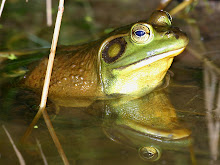| These lizards can change their colours, quite rapidly, but not as rapidly as chameleons. |
|
 During the breeding season, the male's head and shoulders turns bright orange to crimson and his throat black. Males also turn red-headed after a successful battle with rivals. Thus their other gruesome name of "Bloodsucker Lizard". But they don't actually suck anybody's blood! Both males and females have a crest from the head to nearly the tail, hence their other common name "Crested Tree Lizard".
During the breeding season, the male's head and shoulders turns bright orange to crimson and his throat black. Males also turn red-headed after a successful battle with rivals. Thus their other gruesome name of "Bloodsucker Lizard". But they don't actually suck anybody's blood! Both males and females have a crest from the head to nearly the tail, hence their other common name "Crested Tree Lizard".Changeable Lizards are related to iguanas (which are found only in the New World). Unlike other lizards, they do not drop their tails (autotomy), and their tails can be very long, stiff and pointy. Like other reptiles, they shed their skins. Like chameleons, Changeable Lizards can move each of their eyes in different directions.
Changeable Lizards eat mainly insects and small vertebrates, including rodents and other lizards. Although they have teeth, these are designed for gripping prey and not tearing it up. So prey is swallowed whole, after it is stunned by shaking it about. Sometimes, young inexperienced Changeable Lizards may choke on prey which are too large. They are commonly found among the undergrowth in open habitats including highly urban areas. The lizards were introduced to Singapore from Malaysia and Thailand in the 1980s.
Breeding: Males become highly territorial during breeding season. They discourage intruding males by brightening their red heads and doing "push-ups". Each tries to attract a female by inflating his throat and drawing attention to his handsomely coloured head. About 10-20 eggs are laid, buried in moist soil. The eggs are long, spinde-shaped and covered with a leathery skin. They hatch in about 6-7 weeks. They are able to breed at about 1 year old.


No comments:
Post a Comment